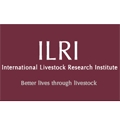 East Africa’s growing human population and rapid urbanization are creating new opportunities for small-scale farmers to make money from pig farming. According to Tom Randolph, an agricultural economist with the International Livestock Research Institute (ILRI), ‘pig production [in East Africa] is taking off and growing rapidly and there is a rising demand for pork and related products, particularly in Uganda.’ Uganda has more than 3 million pigs and over 1.1 million people across the country (17 per cent of households) are involved in pig rearing and trade in pork products.
East Africa’s growing human population and rapid urbanization are creating new opportunities for small-scale farmers to make money from pig farming. According to Tom Randolph, an agricultural economist with the International Livestock Research Institute (ILRI), ‘pig production [in East Africa] is taking off and growing rapidly and there is a rising demand for pork and related products, particularly in Uganda.’ Uganda has more than 3 million pigs and over 1.1 million people across the country (17 per cent of households) are involved in pig rearing and trade in pork products.
Randolph was speaking at the ILRI Nairobi campus during a recent workshop to find ways of diagnosing and controlling the spread of cysticercosis, a disease caused by tapeworms that can cause seizures and epilepsy in people when they consume undercooked pork infected with the tapeworms. Inadequate disease control is one of the biggest challenges facing the informal pig industry in East Africa.

Most of the pork sold in this region is produced by small-scale farmers who keep 1 to 3 animals in ‘backyard systems’, and the rapid growth of urban areas is opening up new opportunities for small-scale producers to intensify their pork production to meet growing demand.
For farmers in the region, pigs are ‘a cash crop of livestock’ because they do not carry cultural and social values like cows and chickens. This means that pig farming, because of its nature as a commercial activity and the shorter production cycles of pigs, can offer significant economic benefits to smallholders. ‘By supporting pig farming, we will be helping women, who are the ones who typically tend to the pigs on these small farms, and families to improve their income and their nutrition,’ said Randolph.
Despite the great potential offered by poor farmers from pig farming, Randolph said ‘the sector remains largely “invisible” and poorly regulated because the region’s governments have not focused on developing it.’
Improvements needed in the sector include providing better breeds and improving marketing systems to capture the ‘value that is currently being leaked out of the system’. Dealing with diseases such as African swine fever and cysticercosis is also critical. ‘Early diagnosis of diseases,’ said Randolph, ‘will give confidence to consumers that the pork they buy is safe.’
See workshop presentation:
Smallholder pig value chains in East Africa
18 Jan 2012 - ILRI


